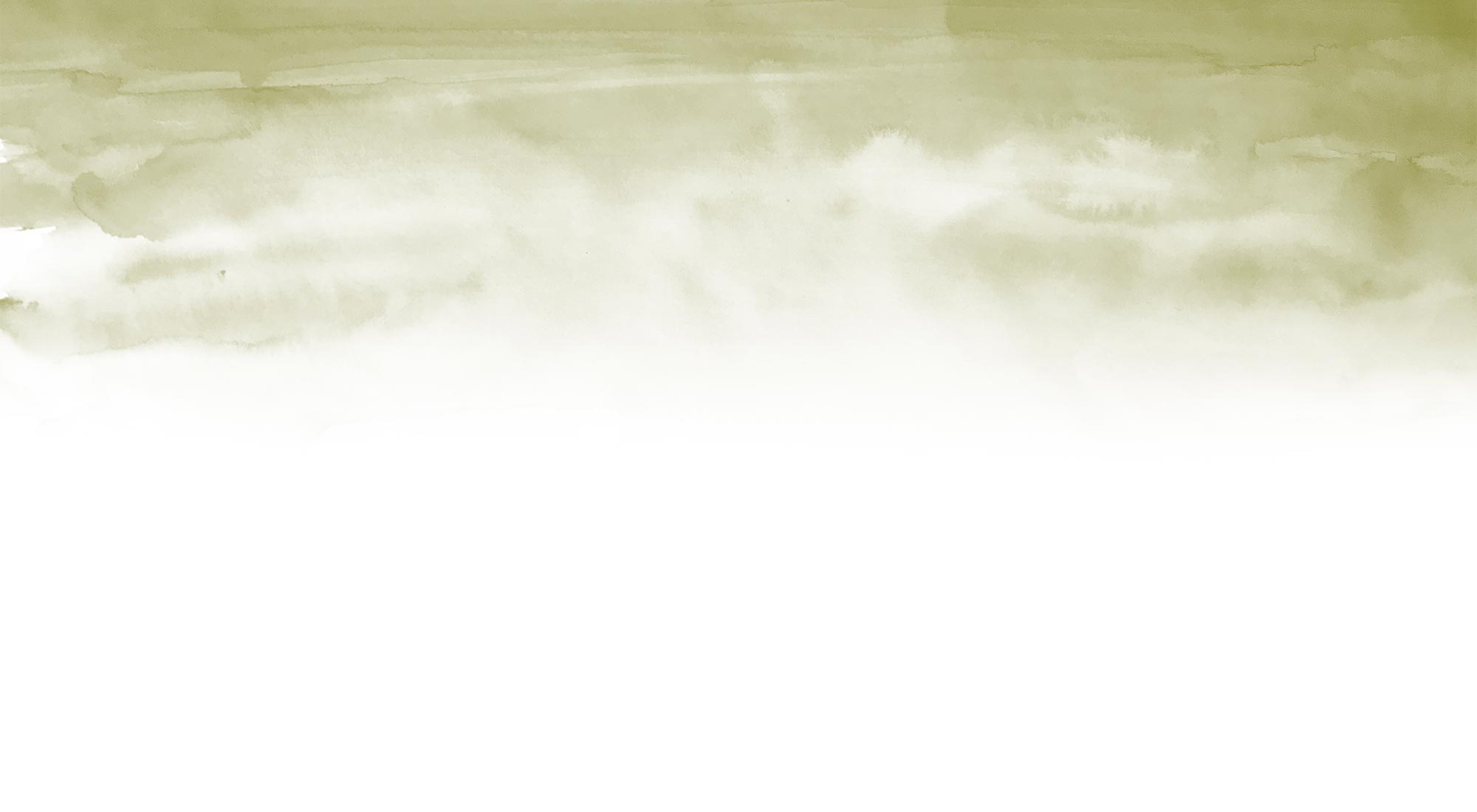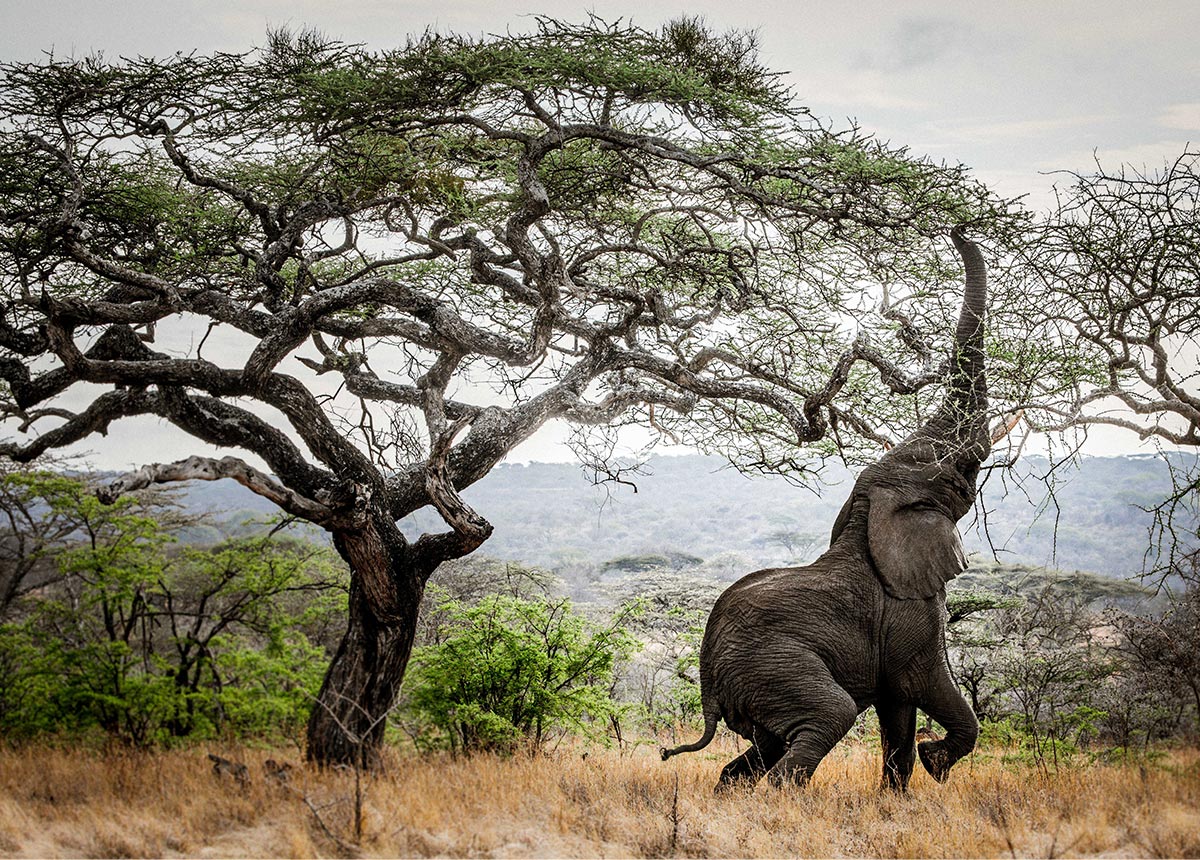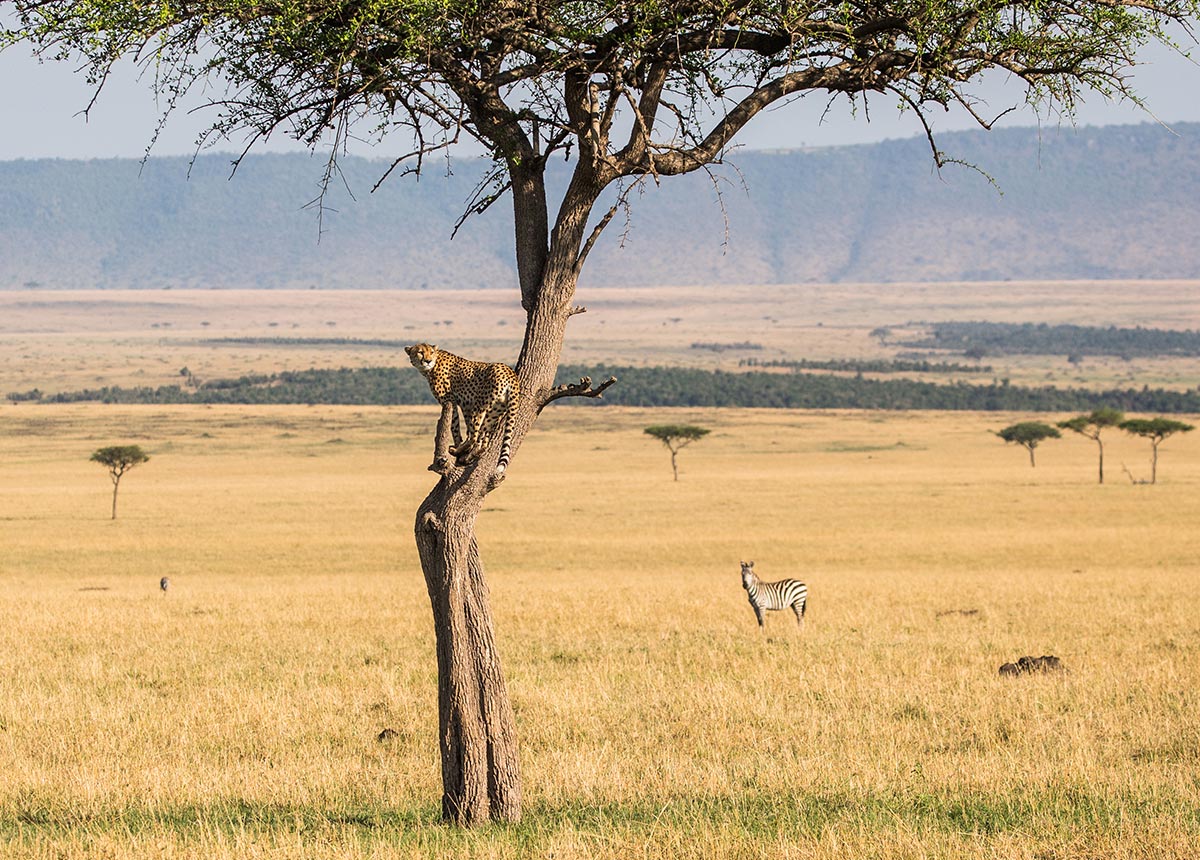Wildlife and habitats
Mwiba Reserve
Habitat
Mwiba is located on the southern edge of the Serengeti and west of the Ngorongoro Crater Conservation Area border. It’s covered with rolling hills, thickets, rock kopjes and interspersed by seasonal rivers containing permanent water holes and more than 20 natural springs. Huge open plains border the edge of the western boundary. The Hadzabe tribe roam vast tracts of land close to Mwiba and continue to forage and practice their traditions within the area.
Wildlife
Unique wildlife and endangered species are common in the area including great cat populations, amazing numbers of elephants, greater kudus and wild dogs. On the northern border of the Serengeti and Ngorongoro Crater lie the vast open plains, which host the Great Migration of the Serengeti ecosystem when the animals are calving.
Best time to visit
Mwiba is a year round destination. The rainy season is from November to May which attracts the great migration and the calving season is from February to March. A large number of cats are usually seen during the calving season as food is easily available.





